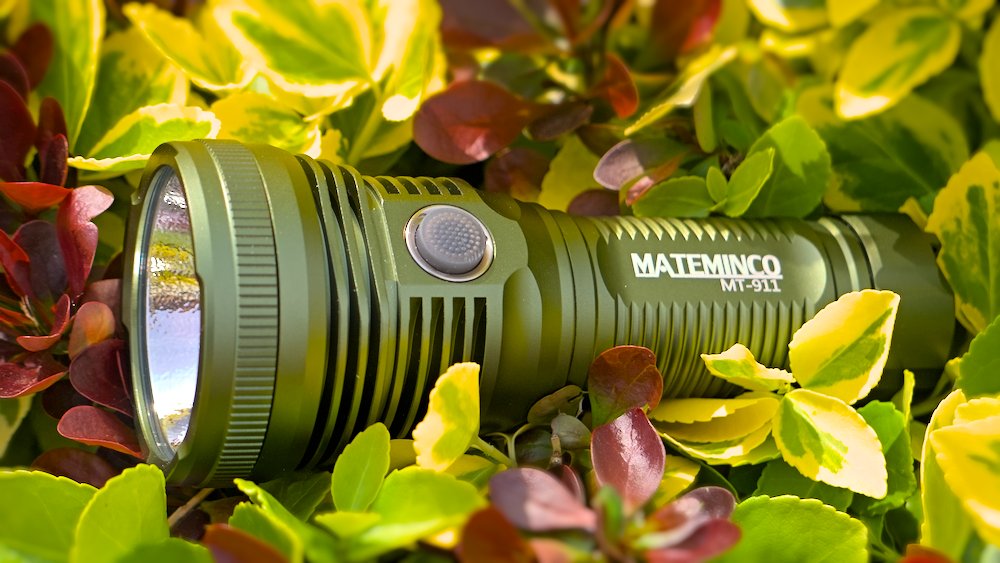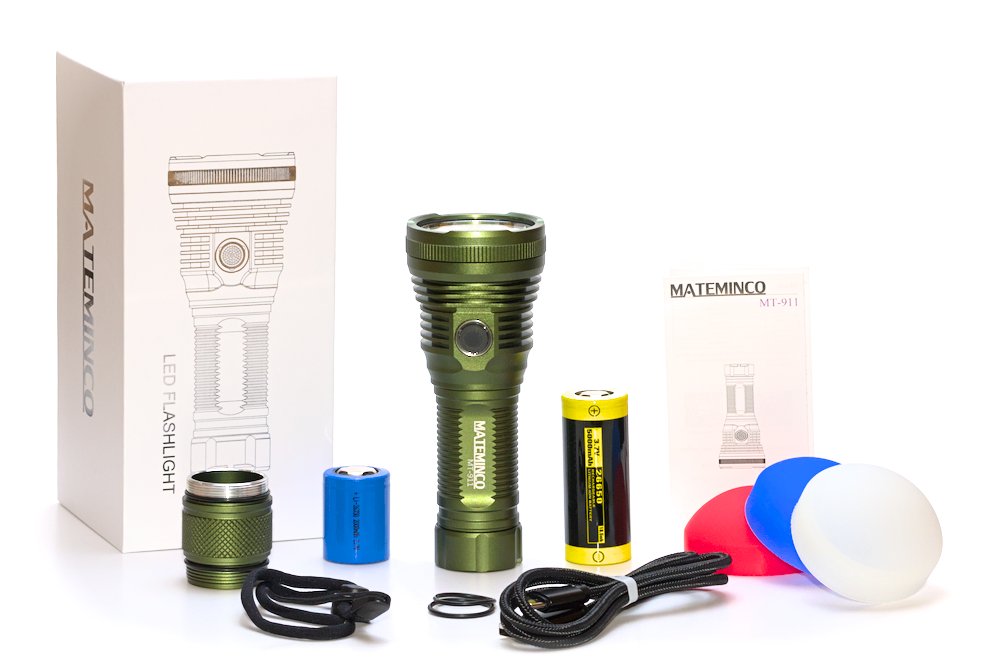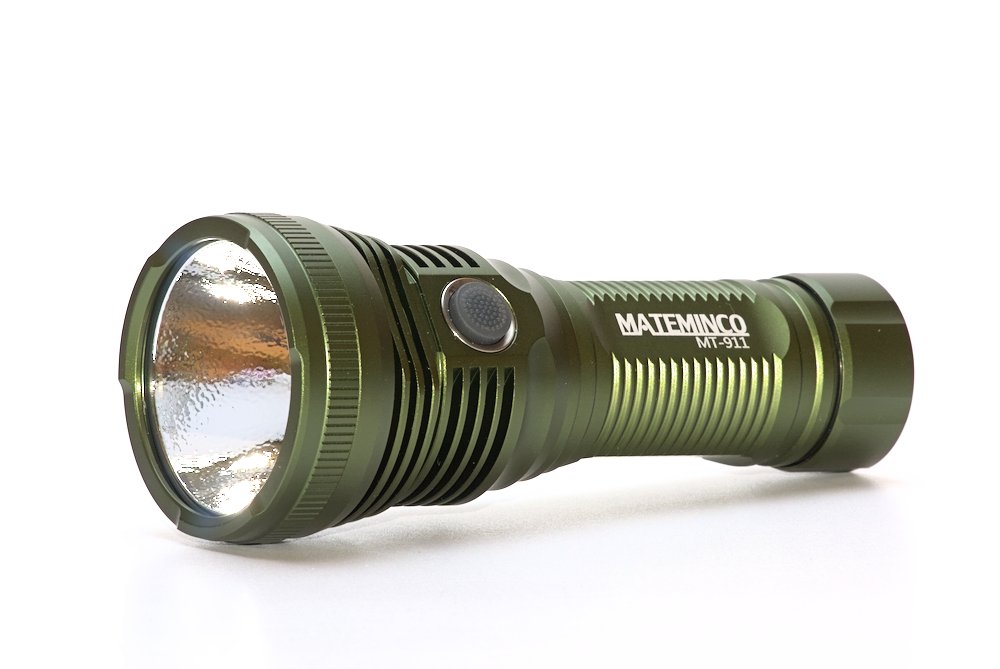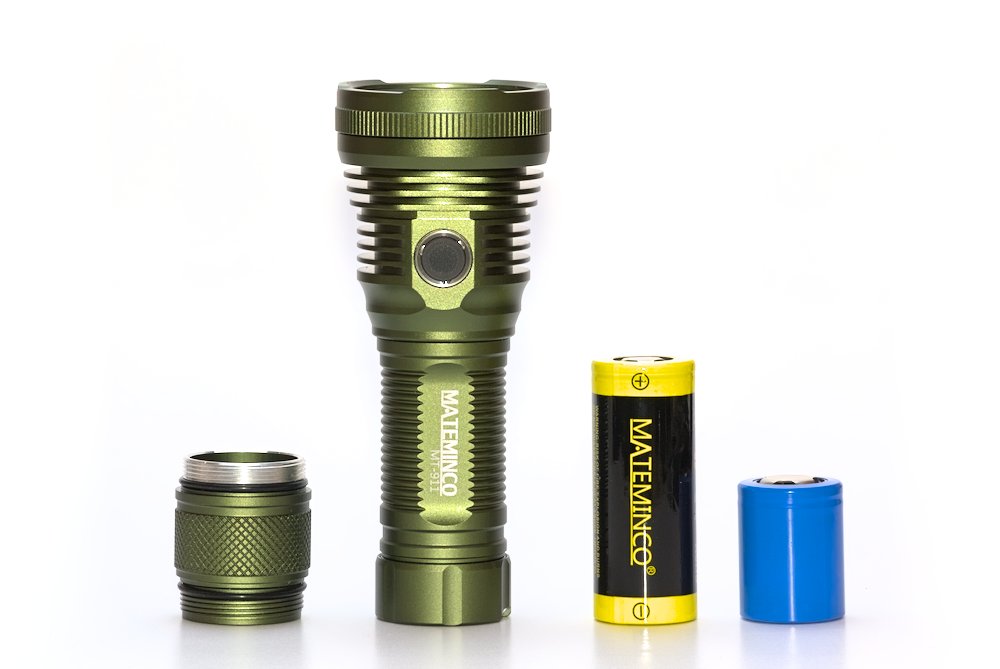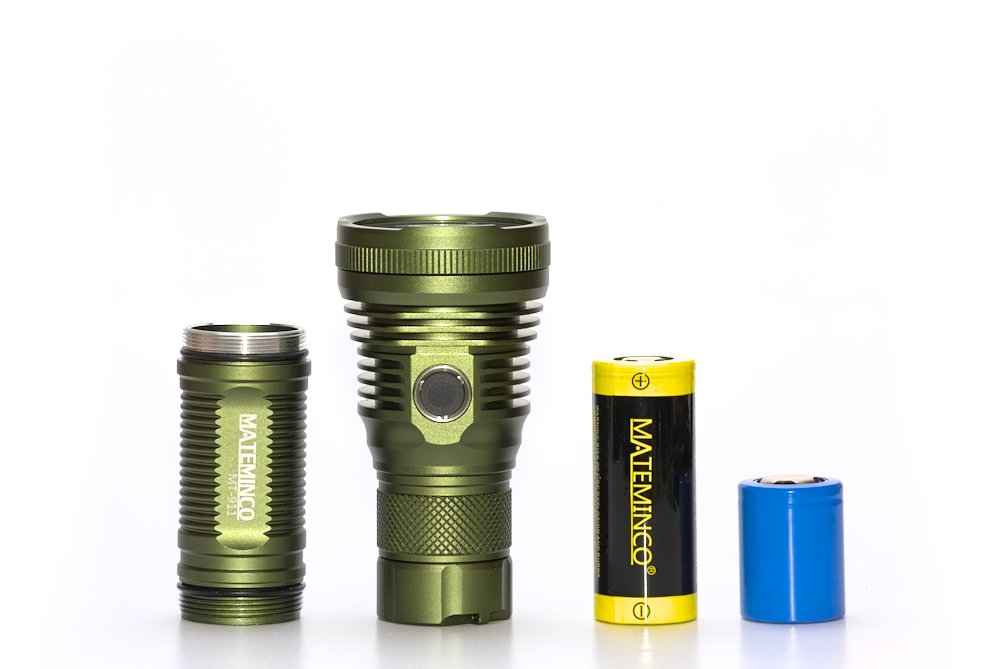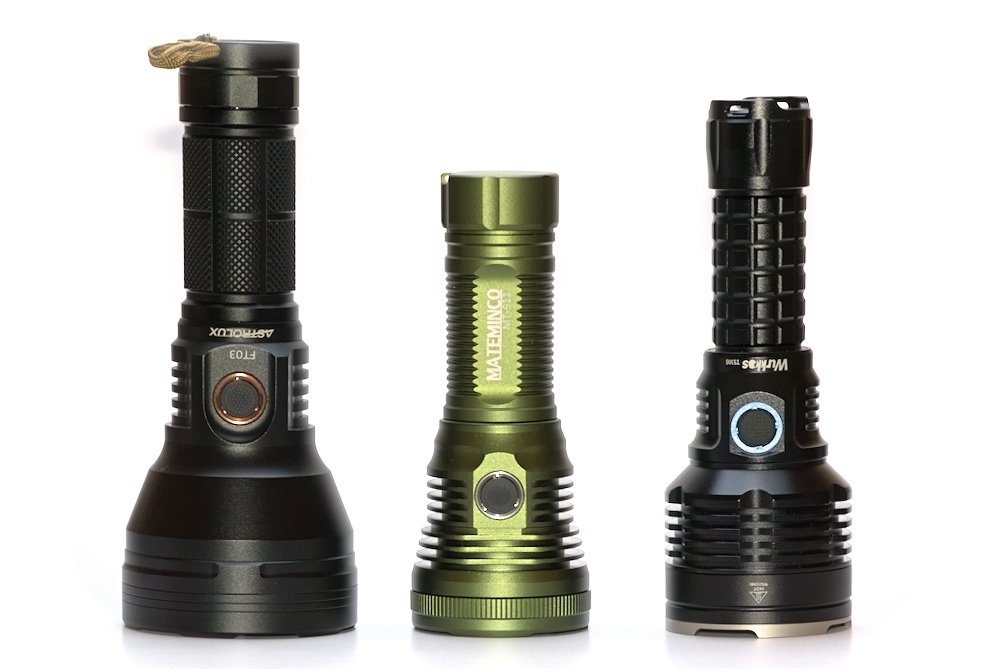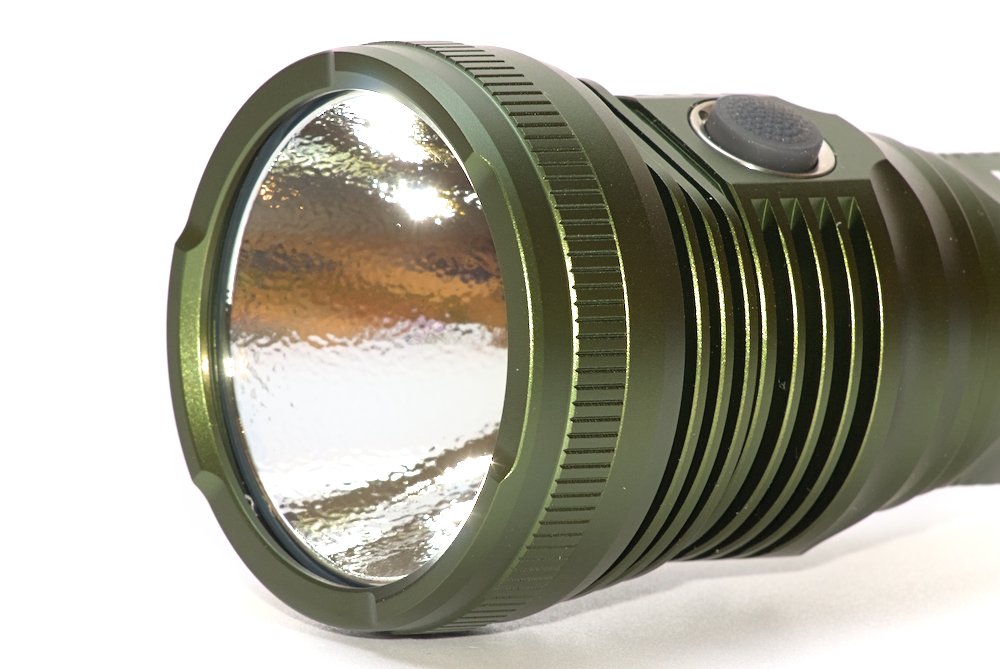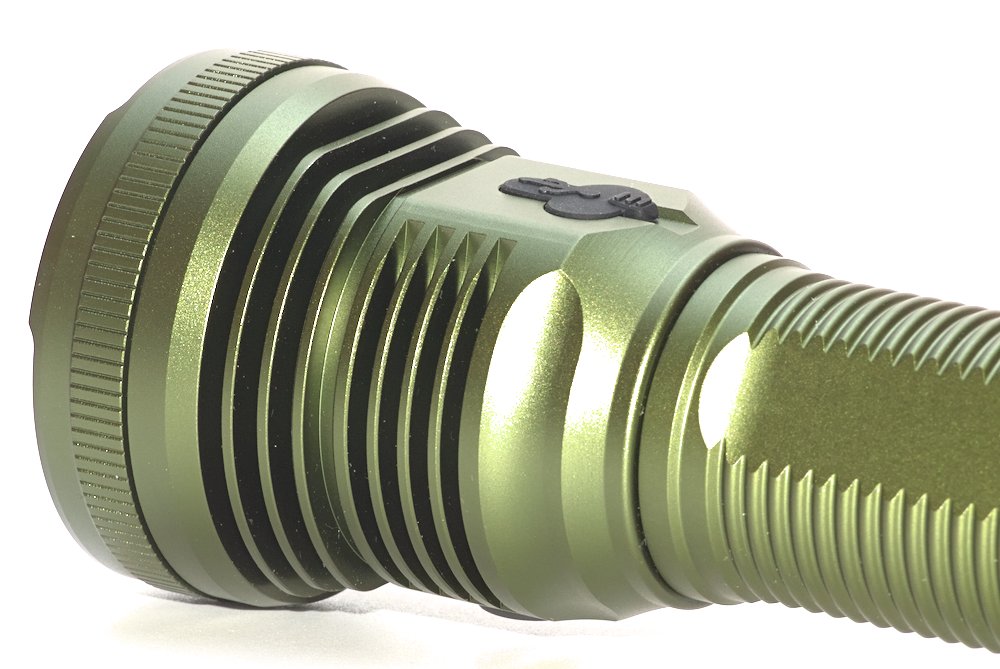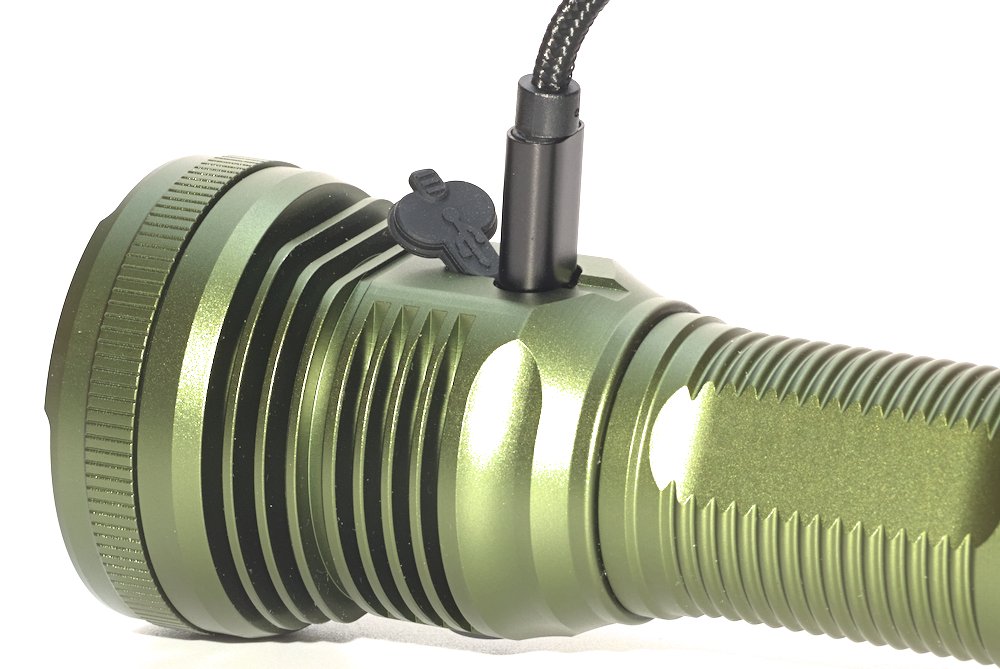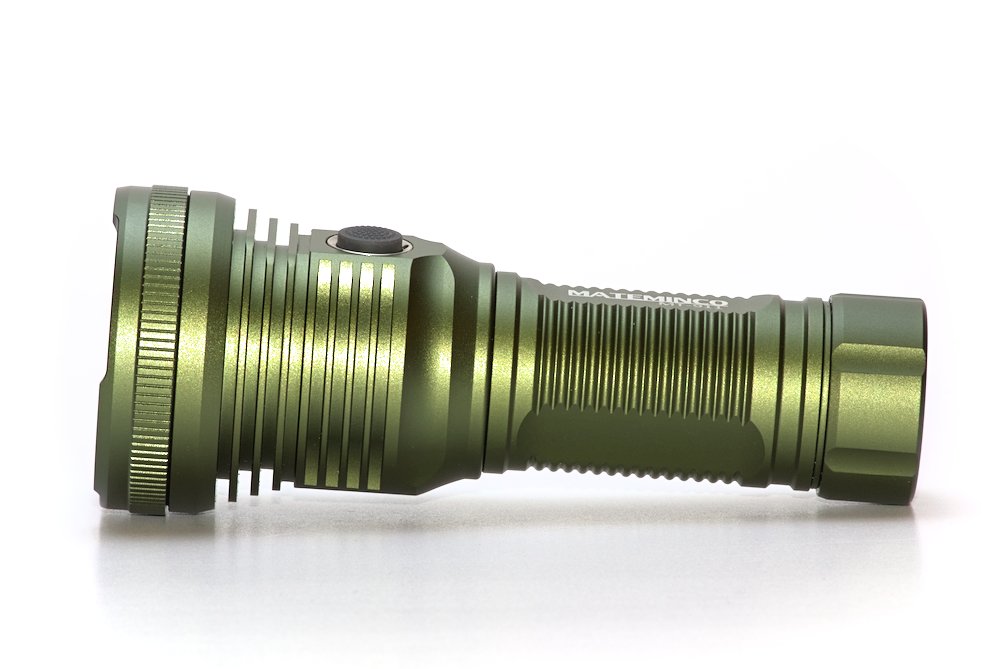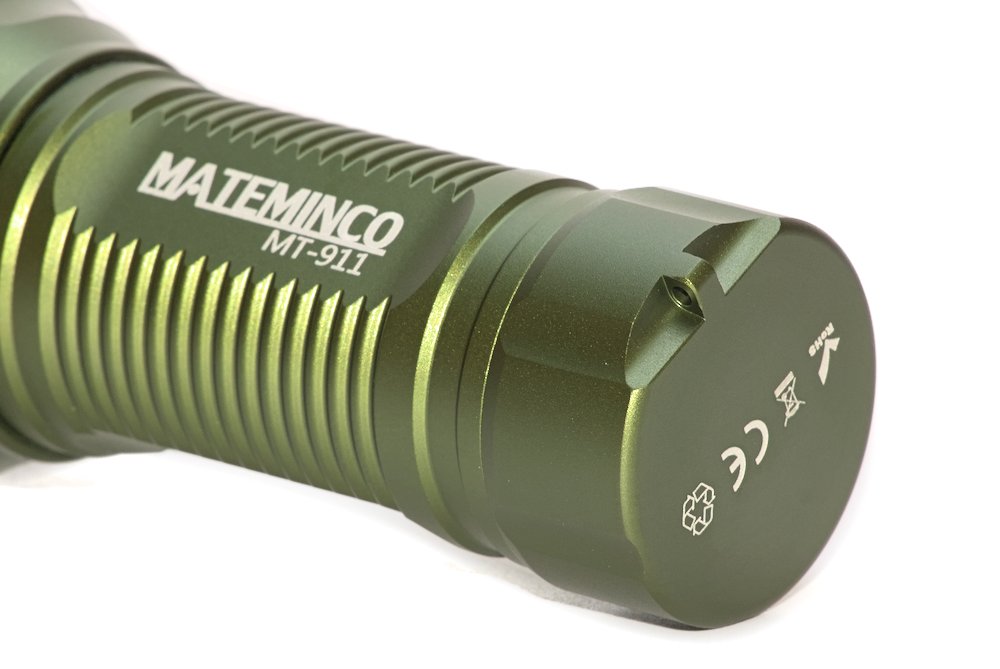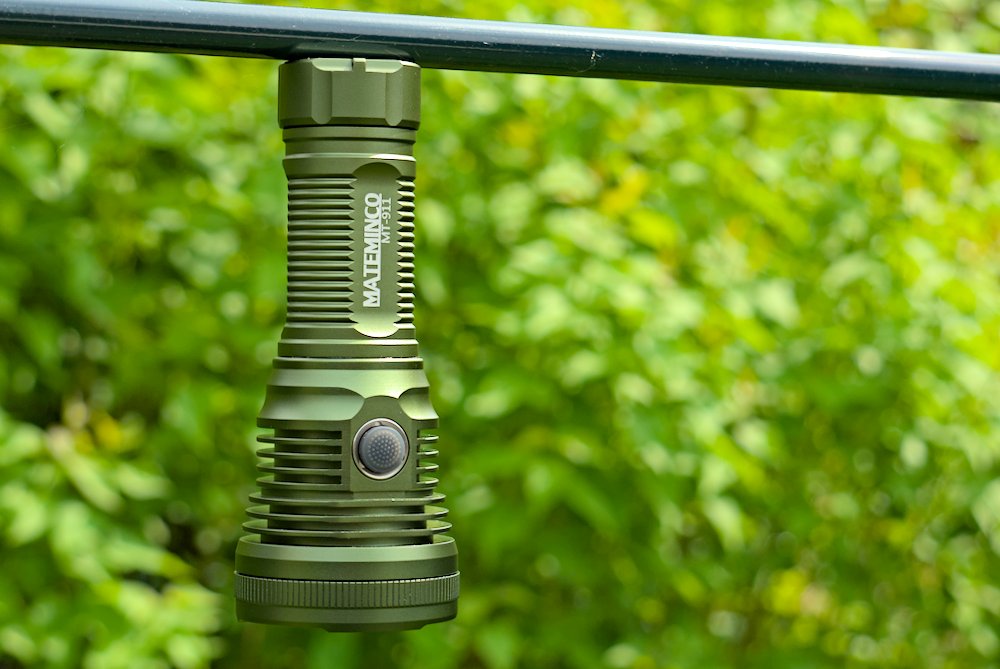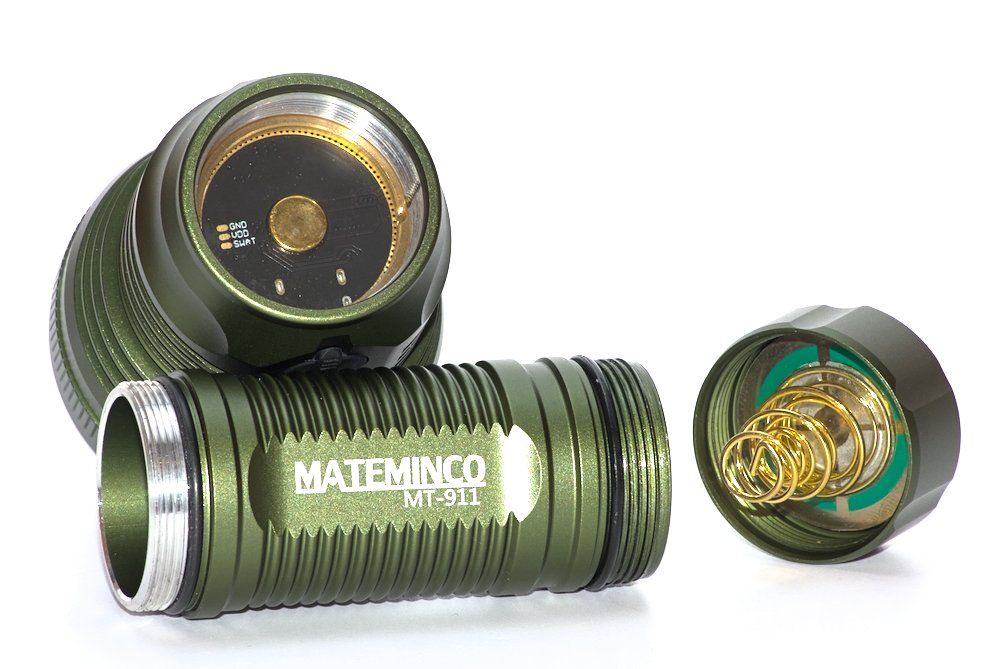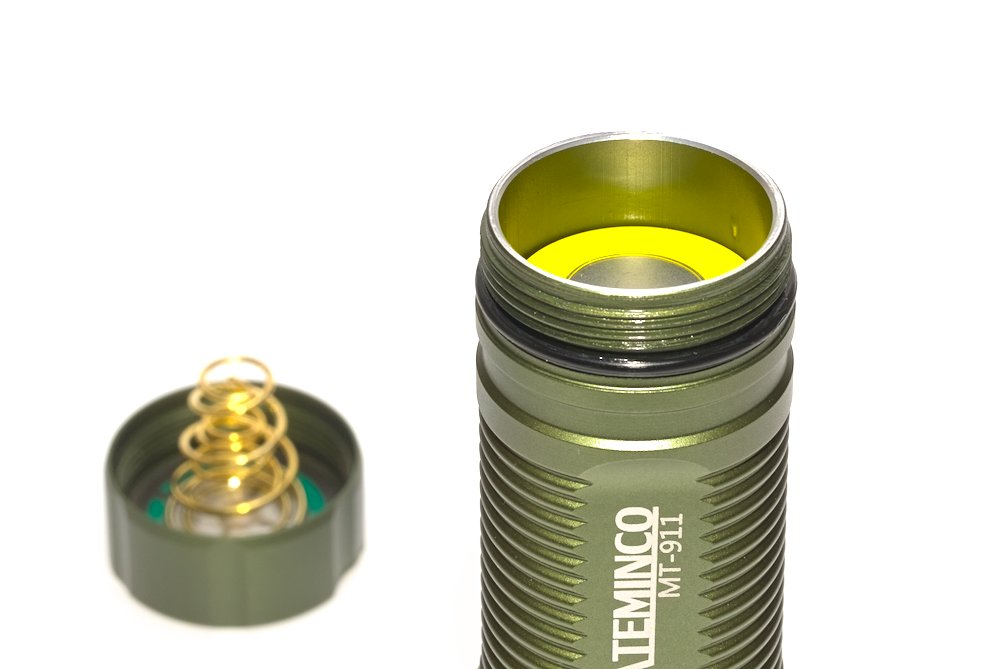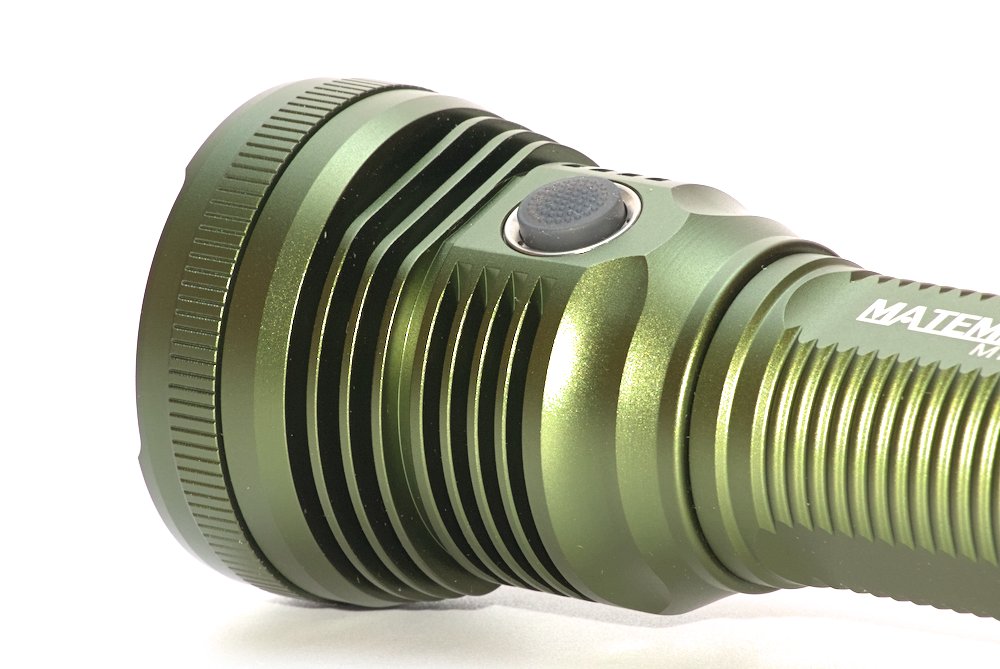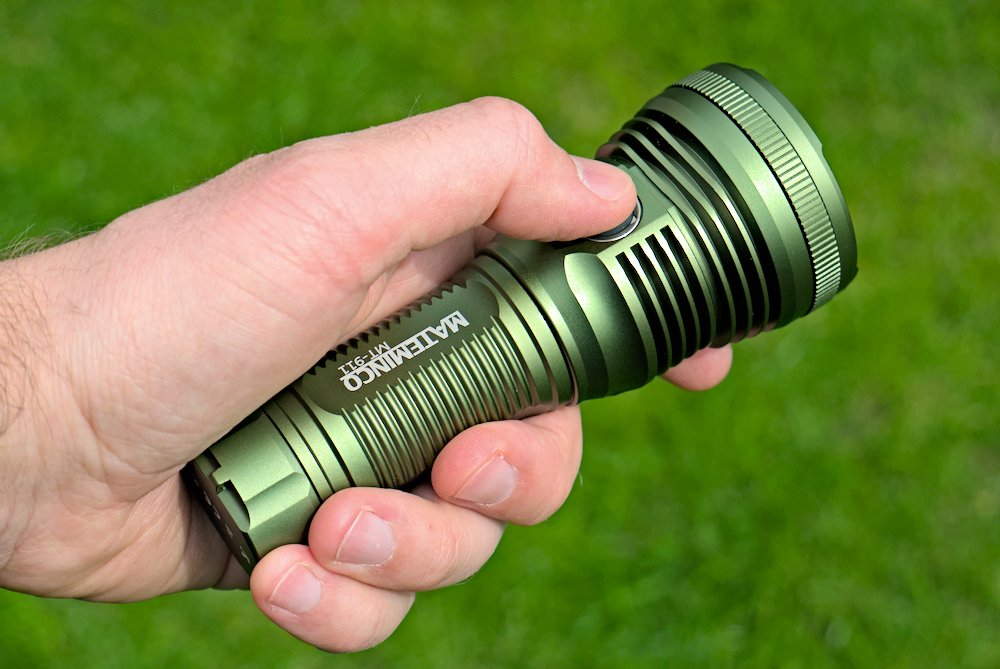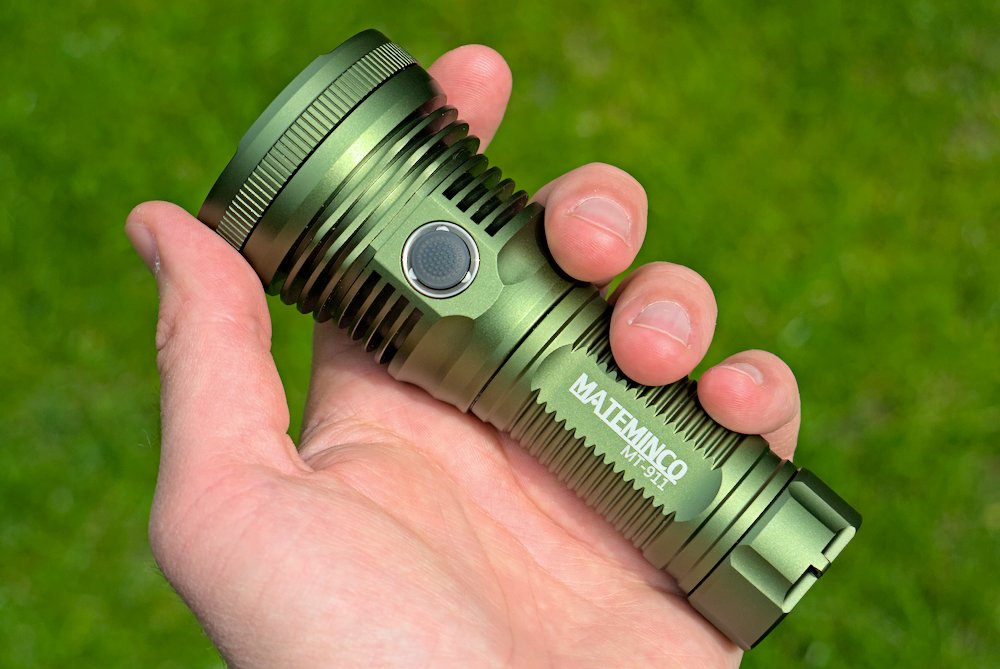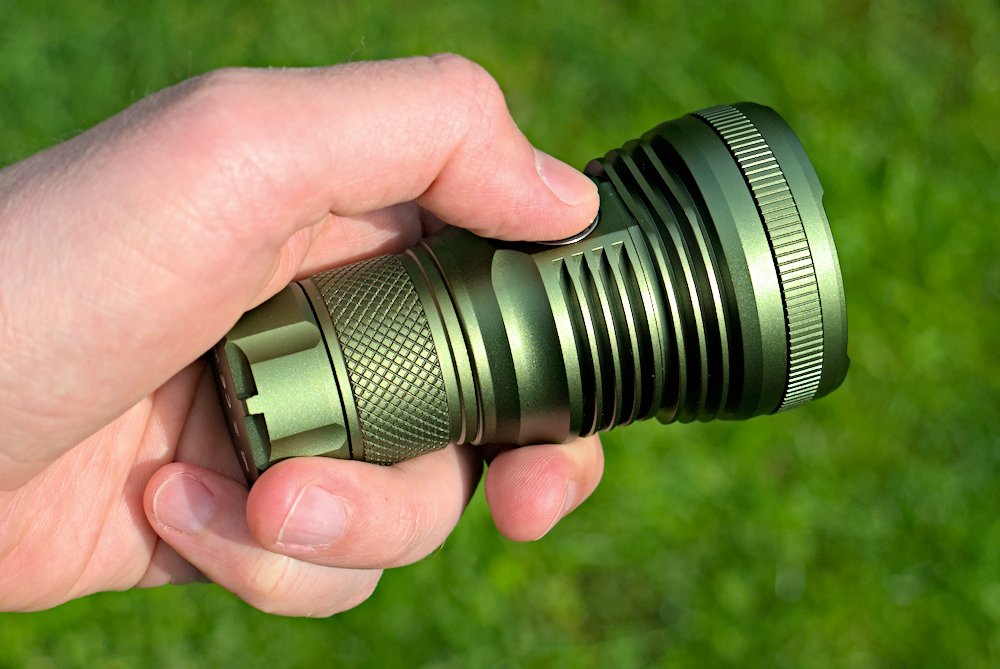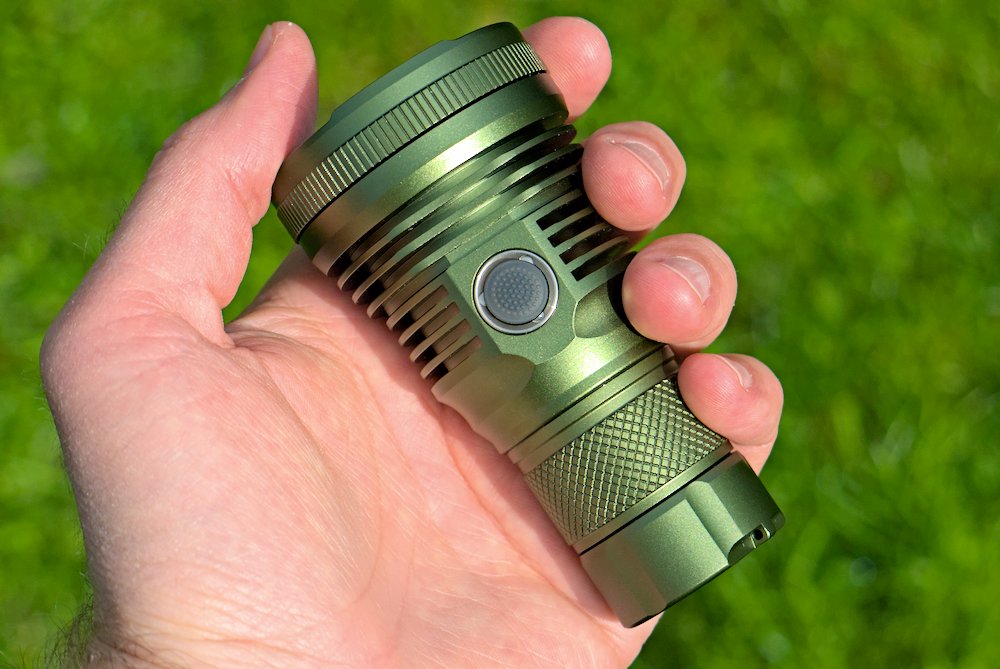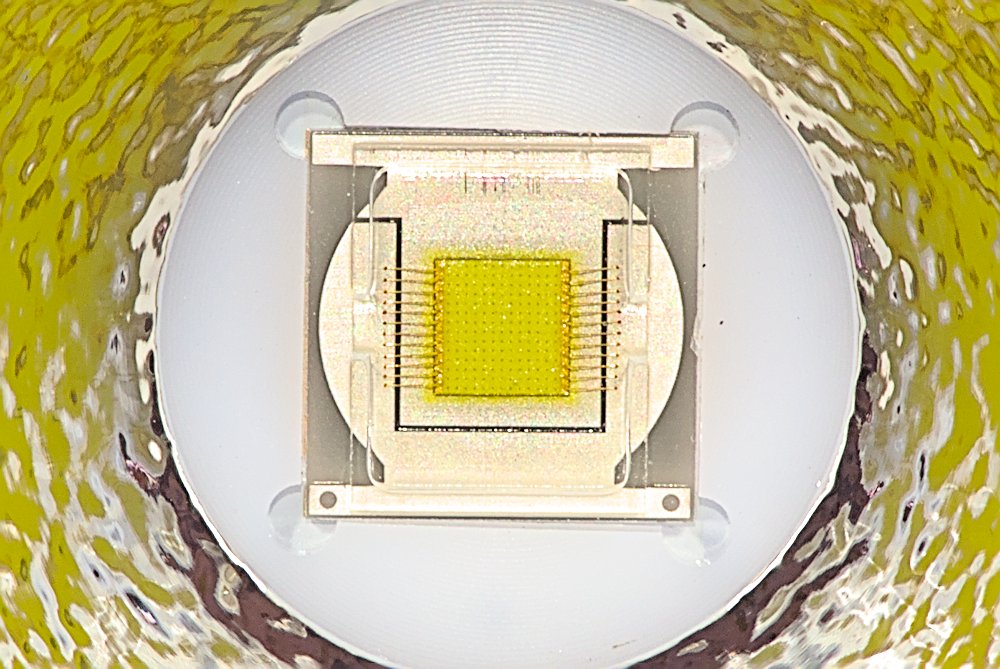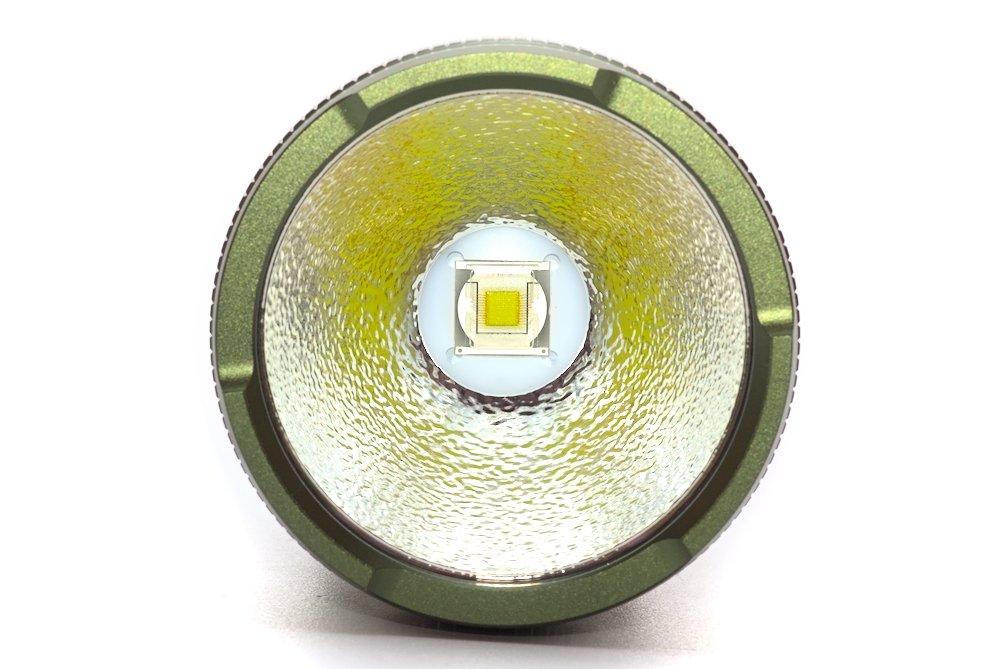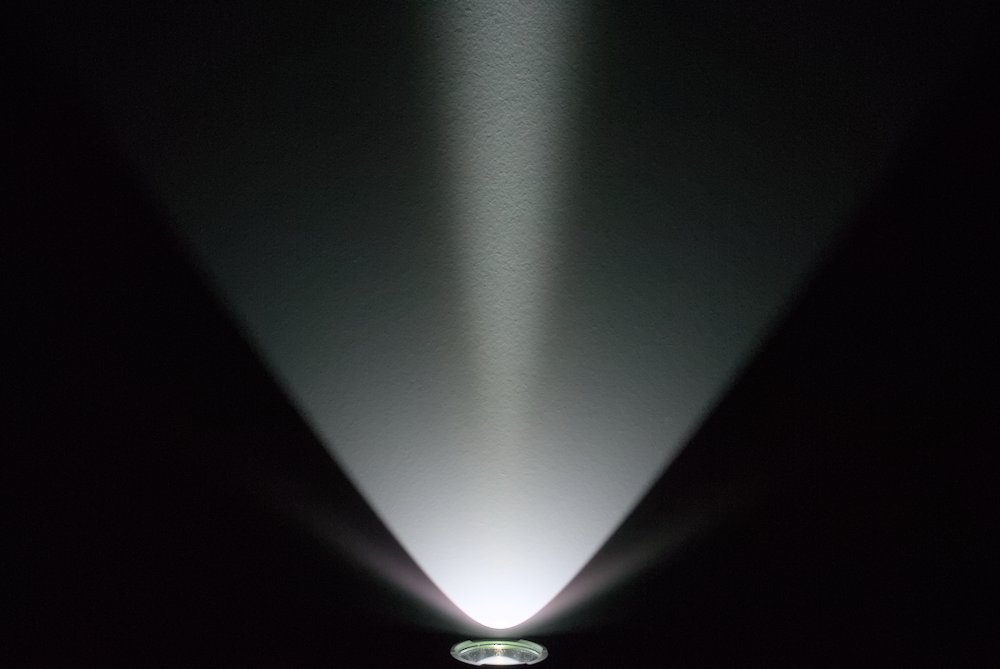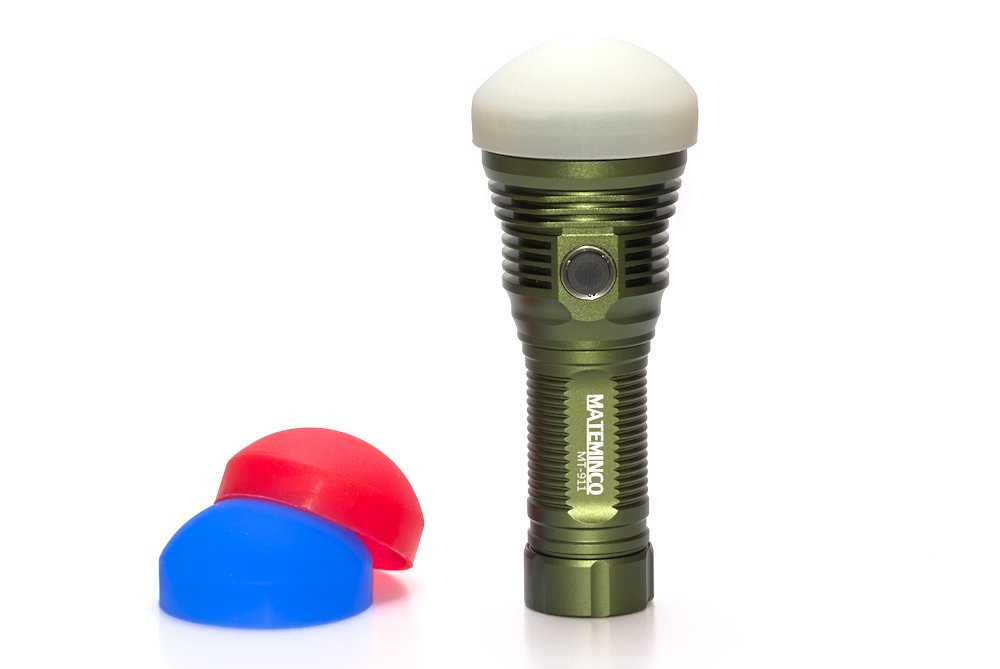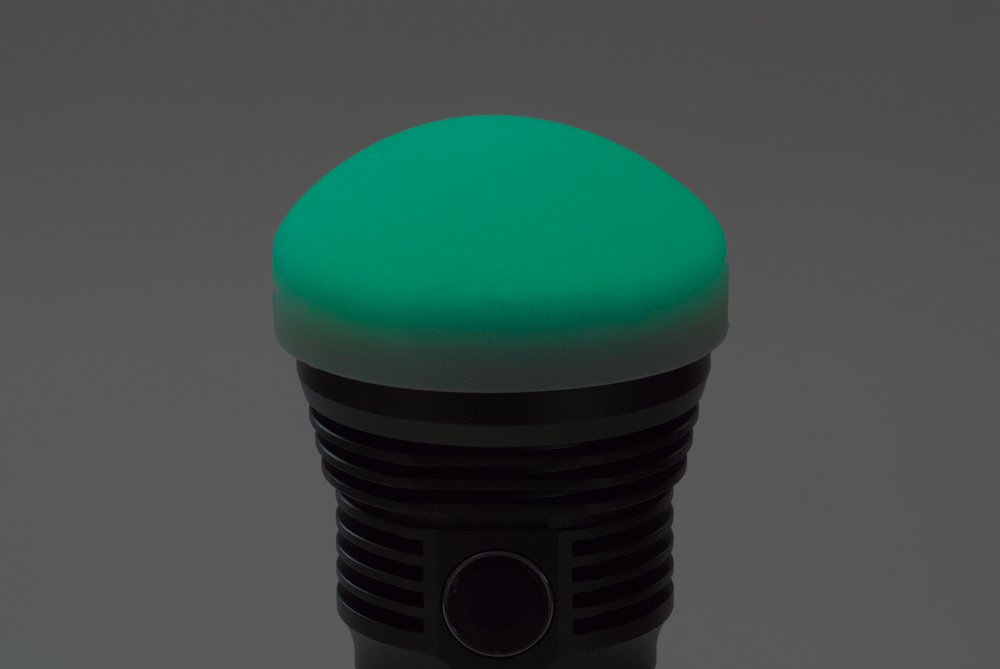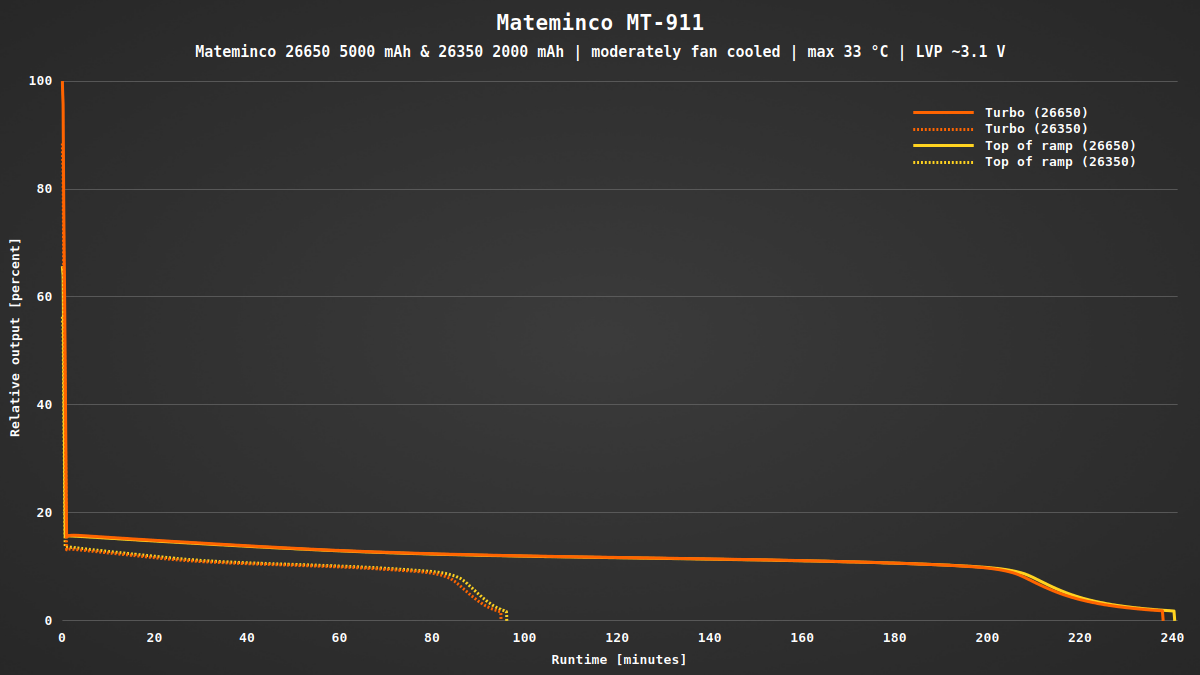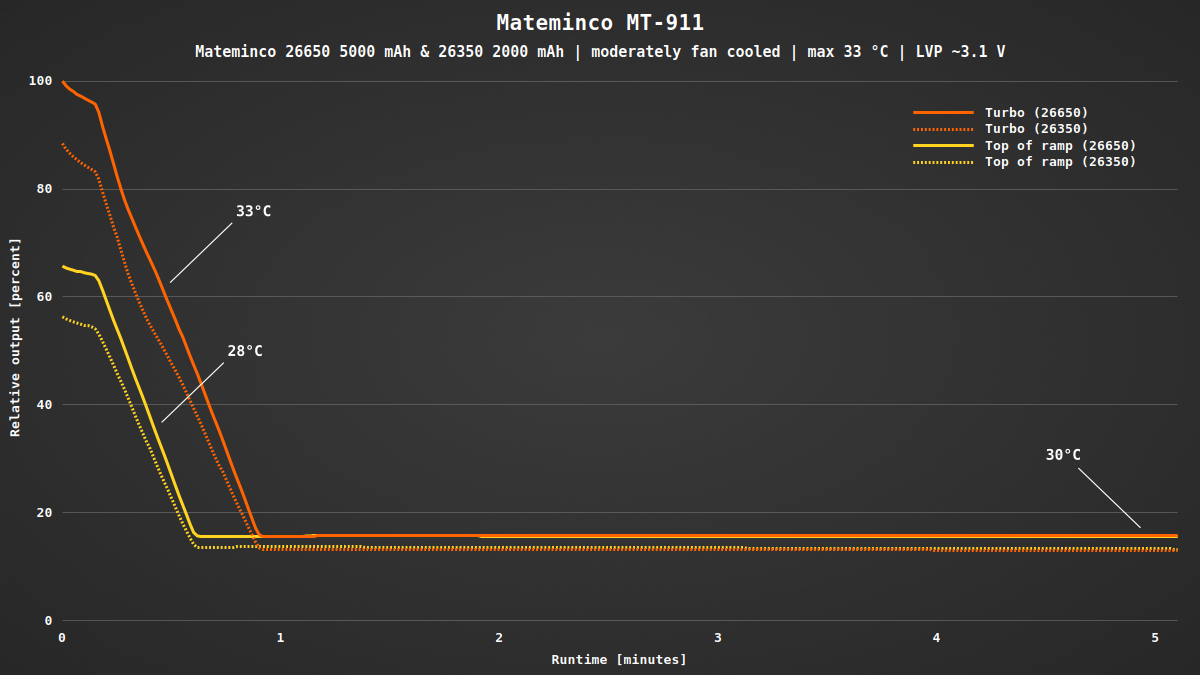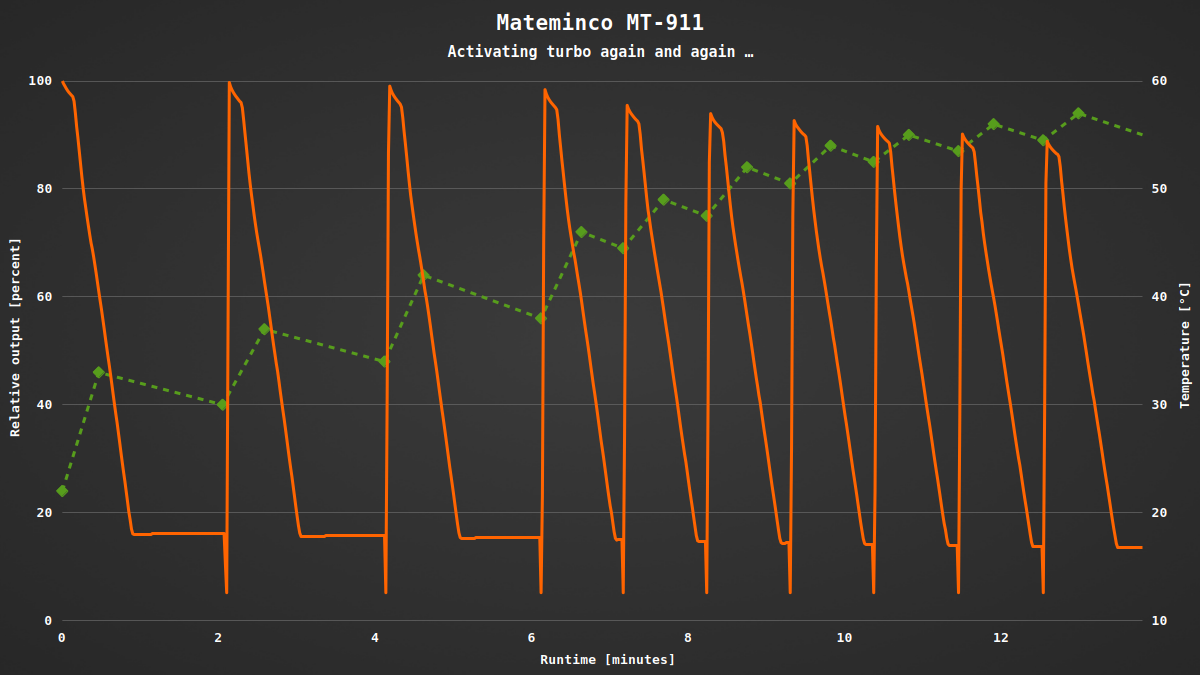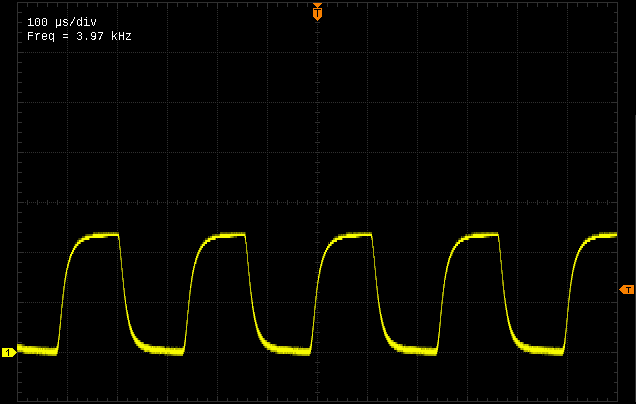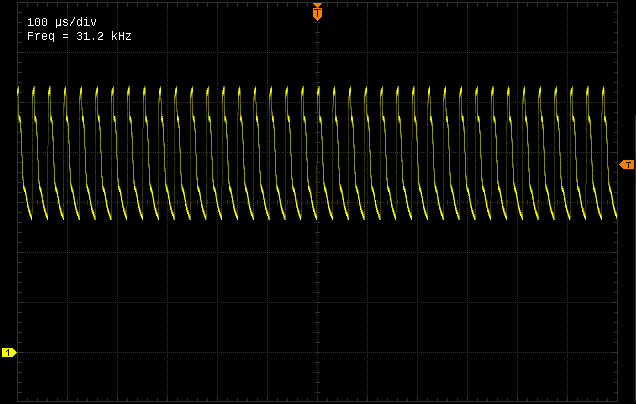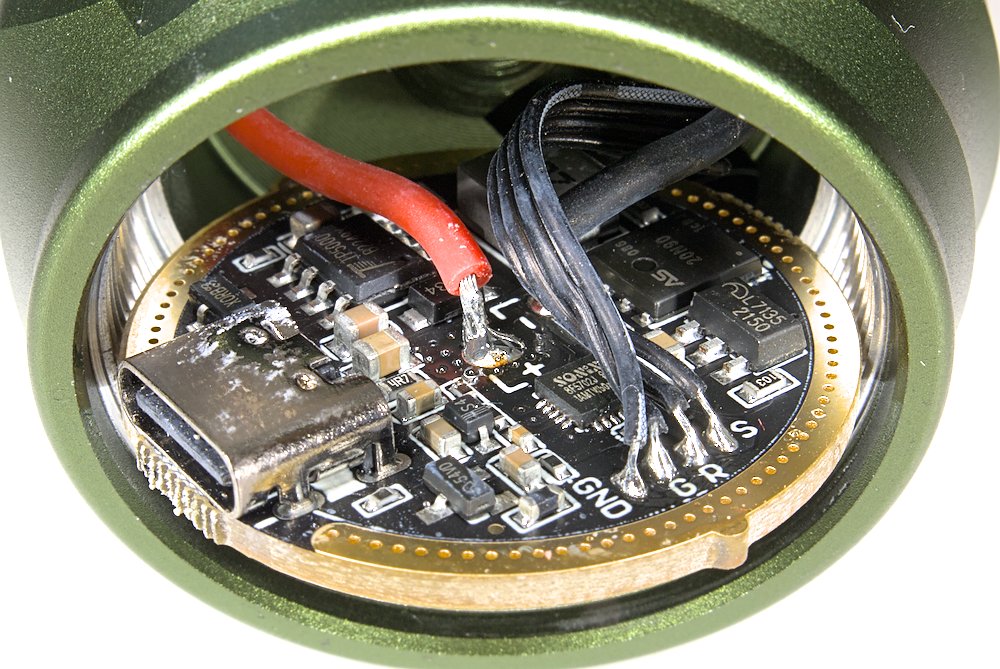This review is sponsored by FlashlightBrand, a flashlight store based in China that ships internationally and sells several flashlight brands. They gave me this flashlight to make this review possible, without any other obligations. Thank you very much!
Today I’d like to show you the new Mateminco MT-911, a powerful pocket thrower with a mysterious “XLD-G90” LED. This appears to be a clone of the well known Luminus SBT90. So let’s see how it compares with the original!
This review is also available in German on my website: SammysHP Blog › Mateminco MT-911
Supplied parts and hardware
You can choose between a small and a large kit. The small version contains following items:
- MT-911
- 2x replacement o-ring
- Lanyard
- Manual (EN, CN)
The large kit contains additional accessories:
- additional short 26350 tube
- 3x silicone diffusers (white, red, blue)
- USB-C charging cable
- 26650 Li-ion battery with 5000 mAh (unprotected, flat-top, 3.88 V)
- 26350 Li-ion battery with 2000 mAh (unprotected, flat-top, 3.83 V)
The MT-911 is available in black and in a dark green color. I decided for the green version.
Length 26650: 133 mm
Length 26350: 100 mm
Diameter head: 54 mm
Diameter tube: 32 mm
| 26650 | 26350 | |
|---|---|---|
| Head: | 140 g | 140 g |
| Tailcap: | 28 g | 28 g |
| Tube: | 33 g | 25 g |
| Battery: | 95 g | 45 g |
| Total: | 296 g | 238 g |
Here in comparison with the Astrolux FT03 – also made by Mateminco – which has a Luminus SST40 and a larger reflector. And on the other side a Wurkkos TS30S which has a original Luminus SBT90.2 (and a slightly larger reflector than the MT-911 as well).
Many cooling fins and a pattern on the bezel that reminds me of a photo lens. The bezel also has three protrusions that allows you to see if the flashlight is turned one while it stands on its head.
Opposite of the switch is the USB-C charging port, protected by a silicone plug. While charging the switch lights up in red, and green when it has finished. Input current is 1.7 A (buck charging regulator is rated for 2 A), so charging will take 3-4 hours. For the small 26350 battery 2 A is a bit much!
Detailed design, many cutouts, chamfers, fillets etc, but no knurling. Still holding it feels very secure. No sharp edges found. Unfortunately the design doesn’t stop the light from rolling away. Head- and tailstand works perfectly, though.
There’s a hole for a lanyard at the tailcap. Better use a small split ring to prevent fraying.
No clip or holster are included. But surprisingly a strong magnet in the tailcap that can hold the flashlight in any orientation. Why a magnet in a thrower? Maybe when you use it together with a diffuser as a lantern.
Threads on the rear end of the battery tube are anodized to allow mechanical lockout. The driver has a brass button as a contact, the tailcap a very long double spring. A bypass will slightly increase the output!
The long spring is necessary to bridge the extra space in the battery tube. On the other hand this makes the MT-911 pretty universal: 18650, 26650 and even 21700 up to 71 mm (maybe a bit longer when you loosen the head a bit).
On strong vibrations and impacts the battery can loose contact with the head. But that’s not a big problem because the driver remembers if it was turned on. When you loosen the tailcap while the flashlight was turned on, it will immediately light up when you tighten it hours later.
It’s rated only at IPX6, so better don’t go swimming with it, but it should survive a little rain. While the flashlight heats up you can hear some clicks when parts expand. The bezel isn’t glued.
User interface and features
The MT-911 is controlled by a single electronic side switch with a silicone cover. It protrudes some millimeters, which makes it easy to find but also easy to press accidentally. While the flashlight is on it lights up in green. When the battery is almost empty it switches to red.
| State | Action | Function |
|---|---|---|
| Off | 1C | Turn on in memorized brightness (except turbo/moon) |
| Off | 2C | Turn on in turbo |
| Off | 3C | Turn on in strobe (20 Hz) |
| Off | 1H | Turn on in moon |
| On | 1C | Turn off |
| On | 2C | Turbo |
| On | 3C | Strobe (20 Hz) |
| On | 1H | Change brightness with smooth ramping (alternating between up/down) |
Smooth ramping is not completely linear, but otherwise works good. I’d like to see a lockout via 4C and maybe a permanent indicator light.
Handling with the long 26650 tube is very good. Switch is where I would expect it to be and it is easy to find. All the edges allow for a secure grip.
Unfortunately the short 26350 tube feels too short in my opinion. Also keep in mind that the capacity of the 26350 battery is less than half of a 26650! Good for the show, but not very practical.
Illumination
Now the part you’ve all waited for: The mysterious XLD-G90! Unfortunately I wasn’t able to find a datasheet or even the manufacturer. It looks very similar to a Luminus SBT90 LED, but slightly simplified.
In the MT-911 it sits in a very strong textured “orange peel” reflector, which eliminates any chance for artifacts in the beam.
I can only estimate the color temperature. Definitely on the cold side, probably around 6500 K. But it comes in a very neutral tint without green or any tint shift!
The spot is well focused and has a smooth transition into the even and very wide spill. Thanks to the small and very textured reflector.
In practice it performs very well. Maybe not for short range, but the wide spill allows for some tolerance.
Detail: Mateminco MT-911 / Wurkkos TS30S / Astrolux FT03
The large kit includes three diffusers made from silicone. They create a mostly smooth illumination and transform the thrower into a lantern. The red diffuser creates a pinkish beam, the blue makes the light just more cool than it already is.
The white diffuser is most practical and even glows in the dark for a few seconds!
Driver and runtime
You won’t find a lot of specifications in the manual or on the box, basically only this:
- 6200 lm
- 210 000 cd (916 m)
- Direct Drive Driver
- Stepdown at 55 °C
No mention of runtime or brightness at specific levels. Nice that Mateminco says it’s just a simple direct-drive driver! So we can expect decreasing brightness over the charge of the battery.
Because there are no fixed levels other than top of ramp and turbo, I limited my measurements to those two levels.
Not much to see… we have to zoom in a lot to see what’s happening at the beginning! After only 10 seconds the output starts to drop quickly to 15%. Doesn’t matter if it’s turbo or top of the ramp. In fact any level above 15% will drop to 15% after about 10 seconds. This is not acceptable in my opinion.
You can reactivate turbo again and again and after some time the flashlight will eventually reach 55 °C.
Unfortunately I don’t have the tools to measure the absolute brightness, but in my runtime measurement box the Mateminco MT-911 achieves almost the same brightness as the Wurkkos TS30S with SBT90.2 (only 2.5% less)!
With the supplied 26650 battery and a bypassed spring I measured 16.7 A at start!
| Level | Current |
|---|---|
| Turbo | 16.7 A |
| High | 9.5 A |
| Off | 56 µA |
During my measurements I noticed that it’s not just a simple FET driver, but a FET+1. The lower linear regulator runs the PWM at 4 kHz, while the FET is switched at almost 32 kHz.
Zoom of FET / FET at higher brightness
At a voltage of 2.85 V the switch lights up in red. For my taste this is too late, because the flashlight will turn off just a little later at 2.75 V. Due to voltage drop the battery will often end at around 3.0 to 3.1 V and you can turn on the flashlight at lower level again.
There are three contacts at the driver: “GND”, “VDD” and “SWAT” – sounds like a way to update the firmware, right? “SWAT” sounds like Sonix. It is very easy to remove the driver by unscrewing the retaining ring. Then you’ll find not only thin and long wires to the LED but also these components:
- Sonix SN8F5702: nice microcontroller, unfortunately not supported by Anduril
- Nanjing Micro One 7135: 350 mA linear regulator, the absolute classic in flashlights („AMC7135“)
- ??? 20N90: MOSFET for high power
- Nanjing Top Power ASIC TP5000: 2 A Li-Ion charging IC
Does anyone know an open-source firmware for Sonix microcontrollers? Even if not, there’s a lot of room for a custom 30 mm driver!
Conclusion
The Mateminco MT-911 does many things right: Great beam with a lot of throw, compact design with support for many different battery sizes, integrated charging function. The new and unknown “XLD-G90” LED also convinced me.
On the other hand there is also a serious flaw: the flashlight steps down far too quickly. Although the UI is kept pretty simple, it could still use a few additional functions such as a lockout or permanent switch backlight.
If you are curious you can find the Mateminco MT-911 here at FlashlightBrand. Alternatively there are also many other interesting flashlights.

